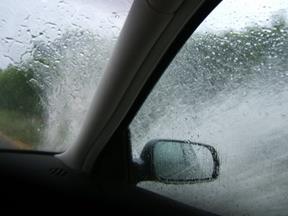 LANCASTER – A strong storm will bring a significant amount of rain to the Antelope Valley over the next 72 hours, according to the National Weather Service. Rain rates at times are expected to range from a half inch to one inch per hour, which could cause significant mud and debris flows.
LANCASTER – A strong storm will bring a significant amount of rain to the Antelope Valley over the next 72 hours, according to the National Weather Service. Rain rates at times are expected to range from a half inch to one inch per hour, which could cause significant mud and debris flows.
A Flash Flood Watch could occur during the next 72 hours, local law enforcement officials warn.
The Lancaster Sheriff’s Station recommends the following safety tips for driving wet-weather conditions:
Safety starts before you drive. Your goal should be to see and be seen. Replace windshield wiper inserts that leave streaks or don’t clear the glass in a single swipe. Make sure all headlights, taillights, brake lights and turn signals are properly functioning so other drivers will see you during downpours. Turn on your headlights whenever you drive.
Proper tire tread depth and inflation are imperative to maintaining good traction on wet roadways. Check tread depth with a quarter inserted upside down into the tire groove. If you can see above Washington’s head, start shopping for new tires. Check each tire’s pressure, including the spare, and be sure to check the pressure when the tires are cold.
Avoid cruise control. Most modern cars feature cruise control, which works great in dry conditions. However, when used in wet conditions, the chance of losing control of the vehicle can increase. To prevent loss of traction, the driver may need to reduce the car’s speed by lifting off the accelerator, which cannot be accomplished when cruise control is engaged. When driving in wet-weather conditions, it is important to concentrate fully on every aspect of driving. Avoiding cruise control will allow the driver more options to choose from when responding to a potential loss-of-traction situation, thus maximizing safety.
Slow down and leave room. Slowing down during wet weather driving can be critical to reducing a car’s chance of hydroplaning, when the tires rise up on a film of water. Even with as little as 1/12 inch of water on the road, tires have to displace a gallon of water per second to keep the rubber meeting the road. Drivers should reduce their speeds to correspond to the amount of water on the roadway. At speeds as low as 35 mph, new tires can still lose some contact with the roadway. To reduce chances of hydroplaning, drivers should slow down, avoid hard braking or turning sharply, drive in the tracks of the vehicle ahead, and allow ample stopping distance. Also, do these things one at a time: brake, then turn, then accelerate.
For more safety tips, visit http://www.dmv.org/how-to-guides/hazardous-conditions.php or http://exchange.aaa.com/safety/roadway-safety/wet-weather-driving-tips/.
–
RF says
Driven in the rain before sometime in your life without killing hordes of people? Great, drive like that again. Done.
William says
Tell me, what is this thing called “rain”?
Rankin says
No! Because it is part of their duty as is enforcing every law.
Joe says
Good, remember that next time it takes them an hour to get there when your house gets burged.
Gypsy says
Drive a little more slowly, stay off your devices/phone and pay attention.
Make sure your tires, windshield wipers and defrosters work.
And if you’re one of those lucky people who works from home, stay home!
Rankin says
Insist that law enforcement enforce the speed limit laws all the time….
Joe says
Because you know they haven’t got anything better to do.